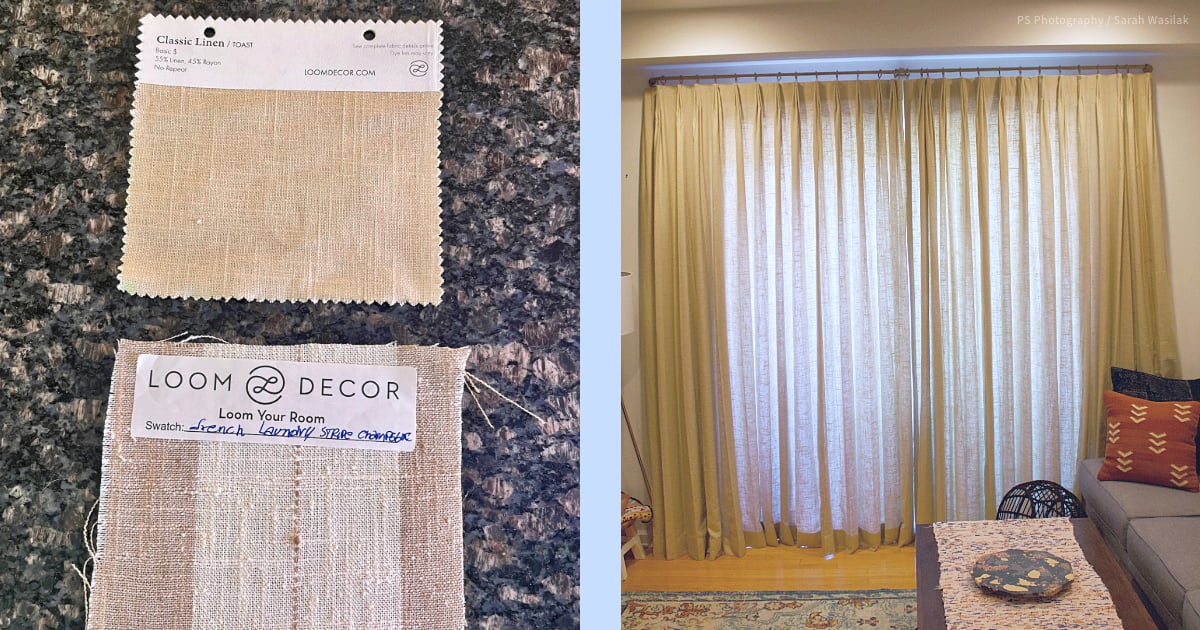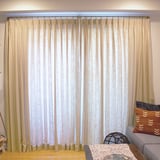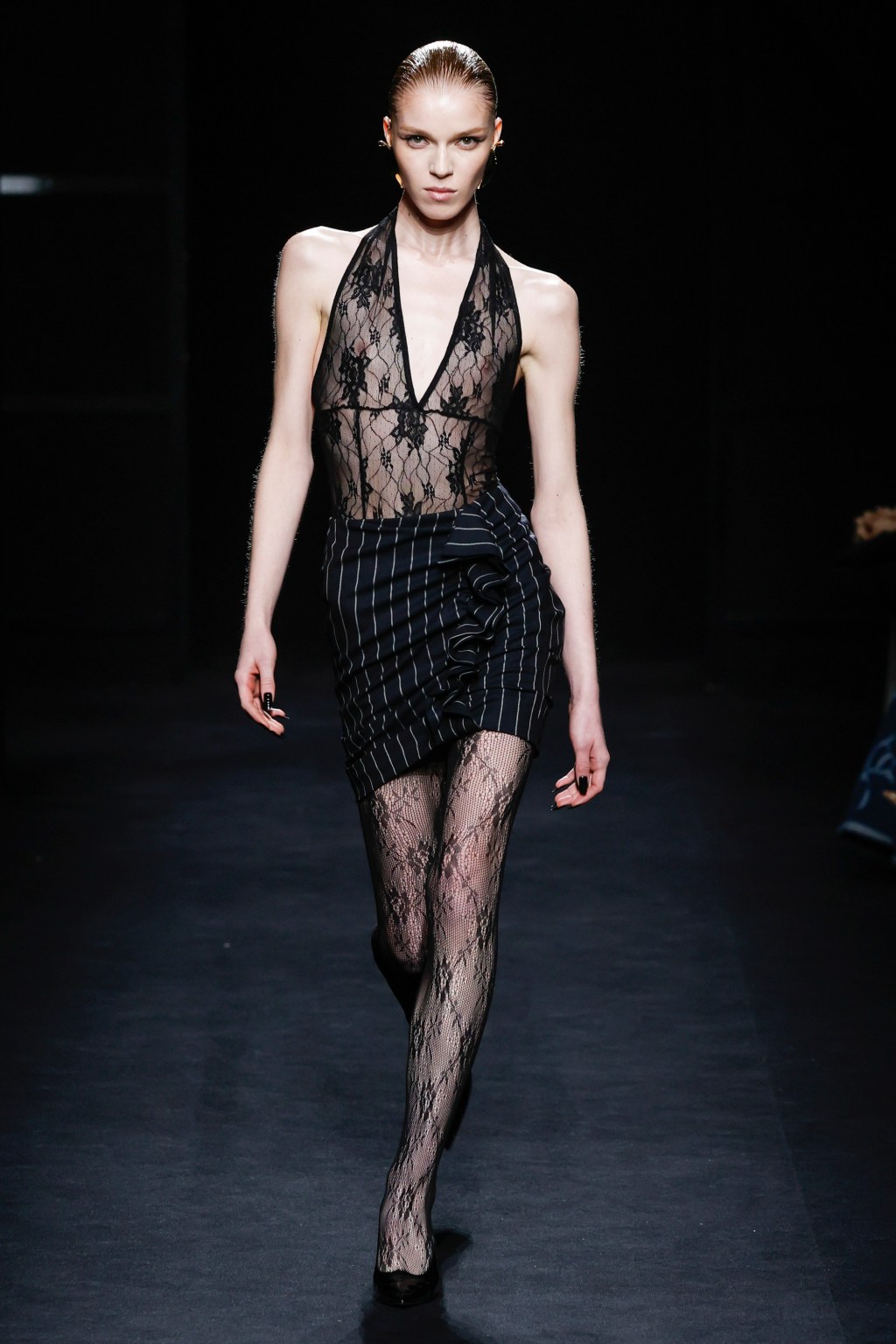After moving in to my boyfriend’s apartment, I slowly started to realize that his space was now also mine. It was only then that I began to digest the harsh reality of his “dorm room” curtains, as I called them – two whisper-thin sheets of sheer, gauzy fabric with rusty metal grommets at the top, hanging haphazardly from a tension rod. They were so long that they didn’t merely skim the floor – no, the fabric pooled in front of our sliding doors that lead out to the porch.
Don’t get me wrong, this made for a wonderful space for my cats to play, tangling themselves in the extra inches of material and ripping stitches in the panels. But visually, it was far from ideal. When we had guests over, I was honestly embarrassed to invite them into the living room. Meanwhile, the bedroom blinds were in far worse shape, with their tangled cords and brown, splotchy stains from a previous window leak. After several months, I finally struck up the nerve to do something about it.
Loom Decor is one of the many online retailers that offers custom drapery, and as soon as I reached out to begin the process, I felt that familiar sense of relief that comes along with much-needed home improvement. Stylist Lisa Van met with me and my boyfriend virtually, both via FaceTime and Zoom, so that we could show her our space and jot down important measurements of our windows and surrounding perimeters in the living room and bedroom.
Van led us through the consultation seamlessly, teaching us about the difference between curtains, shades, and blinds, suggesting fabric for each room, and offering on-trend options for accompanying hardware. After sending us a book of material swatches in the mail to lock in our custom order, it took about a month and a half for production and delivery. Since Loom Decor doesn’t offer installation, we arranged for an expert we found on Taskrabbit to stop by and get the job done. After about two hours, our home was, essentially, transformed.
Ahead, you can read answers to some popular questions about custom drapery, which will hopefully help you decide whether it’s worth the investment. Plus, see before-and-after pictures of our space and learn about our product selection for each room.
Experts Featured in This Article
Lisa Van is a Loom Decor decor stylist.
What’s the Difference Between Custom and Store-Bought Curtains?
Custom curtains have a longer lead time as manufacturers produce them based on your exact specifications and home measurements. Store-bought drapery is more readily available and often comes with lower-quality fabric, which means it may be less durable and have a shorter lifespan. While it’s possible to shop for store-bought curtains and feel happy with your selection, Van has some general rules of thumb when it comes to fabric and mounting height that you’ll likely want to read up on before choosing to DIY it.
What Is the Best Fabric For Custom Drapes?
Fabric is dependent on personal preference and the look and feel of your home. Van suggests analyzing your aesthetic – from paint color to pre-existing decor – then choosing a material that feels cohesive or complementary. Many people go with neutrals, especially given the long-term investment.
“Drapery is made to last for years and years, so I would pick something you know you’ll love coming home to every day and not just what is trendy,” she tells PS. Light to medium-weight fabric is ideal, as heavyweight fabrics can appear too heavy or bulky, depending on the size of the window you’re working with.
How to Measure For Custom Drapes
While many experts have slightly different suggestions for how to measure for custom drapes, Loom Decor asked us to measure the width of the window (or in our case for the living room, sliding doors), then extending the drapery rod eight to 15 inches to the left and right sides of the window. This creates a sort of optical illusion for your space, making the window frame appear bigger than it actually is, even when the curtains are pushed off to either side. The total width of the window plus that additional eight to 15 inches will be the overall width that you order, and it will also be the size of the drapery rod that you need for hanging.
The length of the panels you order should be the total height from the top of the window frame to the floor plus five to 15 inches, depending on how tall your ceilings are (more on that below).
Pictured at right: Loom Decor’s Euro Pleat Split Panel Drapery in Classic Linen Toast mounted on a Gold French Return rod with privacy lining.
How High Should You Mount Drapery Panels?
Loom Decor suggests mounting the curtain hardware five to 15 inches above the window frame, which thereby elongates the visual height of the window and opens up your space. (See the before-and-after photo above for proof!) For standard ceilings, Van suggests mounting the hardware two to three inches below the ceiling or crown molding. If you have more or less space available, she recommends mounting two inches below the ceiling to allow some breathing room for installation.
For the “stack,” or how far the rod will extend on the left and right sides of your windows, Van suggests going at least eight to 10 inches on each side. “If you have more space available, I would extend the rod 15 to 20 inches on either side,” she says. “The more the merrier! You also want your drapery to just graze the floor, so I would recommend ordering drapery that hangs about one-quarter inch above the floor to prevent dragging.”
Shades are relatively easier to mount and measure for, since they fit right into the frame of your window. Simply measure the length from the top of the window to the bottom and the interior width of the space you’re working with. I’m personally obsessed with the sleek and contemporary feel of our Flat Roman shade panel, which has a weighted bar to help folds stack neatly at the top, is cordless, and includes hardware for mounting.
Pictured at right: Loom Decor’s Flat Roman Shade in Champagne French Laundry Stripe with privacy lining.
How Much Does It Cost to Install Custom Drapery?
As you might expect, custom drapery varies in price depending on the retailer or company you choose to work with, the measurements of your windows, and your style preferences. The Loom Decor pieces you see pictured in my space start at the following price points: Euro Pleat Drapery in Classic Linen ($481), Custom French Return Drapery Hardware ($289), and Flat Roman Shade in French Laundry Stripe ($332). You can learn more about Loom Decor’s pricing with a free design consultation.
Sarah Wasilak (she/her) is the associate director of Shopping at PS. With plenty of experience in the commerce market, a keen interest in SEO, and 10 years as an editor at the brand, she enjoys writing across the lifestyle and health-and-fitness categories. She has bylines at PS, InStyle, Elle, Refinery29, Who What Wear, Elite Daily, Byrdie, and The Quality Edit and aims to amplify minority voices in all her work.




